Manitou Mara Pro PB
Adjustments:
- High- and low-speed compression
- Rebound
- “Work / Party” Climb Switch
- Positive and negative chamber volume via spacers
Sizes Offered:
- Trunnion:
- 165 x 40 / 42.5 / 45 mm
- 185 x 50 / 52.5 / 55 mm
- 205 x 60 / 62.5 / 65 mm
- Eyelet:
- 190 x 40 / 42.5 / 45 mm
- 210 x 50 / 52.5 / 55 mm
- 230 x 60 / 62.5 / 65 mm
Pricing (EU prices include VAT): $600 / €735
Stated Weight: 425 g (no size specified)
Blister’s Measured Weight: 586 g (205 x 65 mm)
Test Locations: Washington
Reviewer: 6’, 165 lbs / 183 cm, 74.8 kg
Test Duration: 3 months
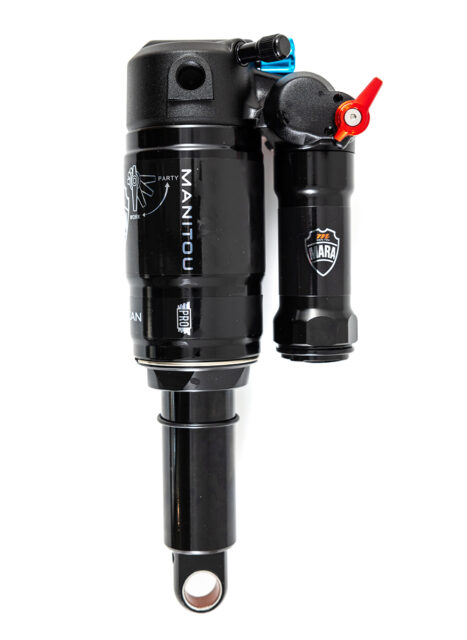
Intro
Manitou has never been afraid to do things differently, evidenced by their iconic Reverse Arch fork design of forks like the Mezzer and Mattoc, along with their continued commitment to the inverted layout of their Dorado Downhill fork. Not all novel designs work out, though, and the unconventional fixed-pressure negative spring of the prior Mara Pro shock ultimately made it hard to recommend.
With their new Balance Groove design, Manitou has officially brought a self-equalizing air spring arrangement to the Mara lineup, and we were keen to see if the new air spring could finally be a suitable match for the otherwise promising damper design. Fortunately, the Mara Pro PB delivered — read on for our full thoughts on why the Mara Pro PB left us so impressed.
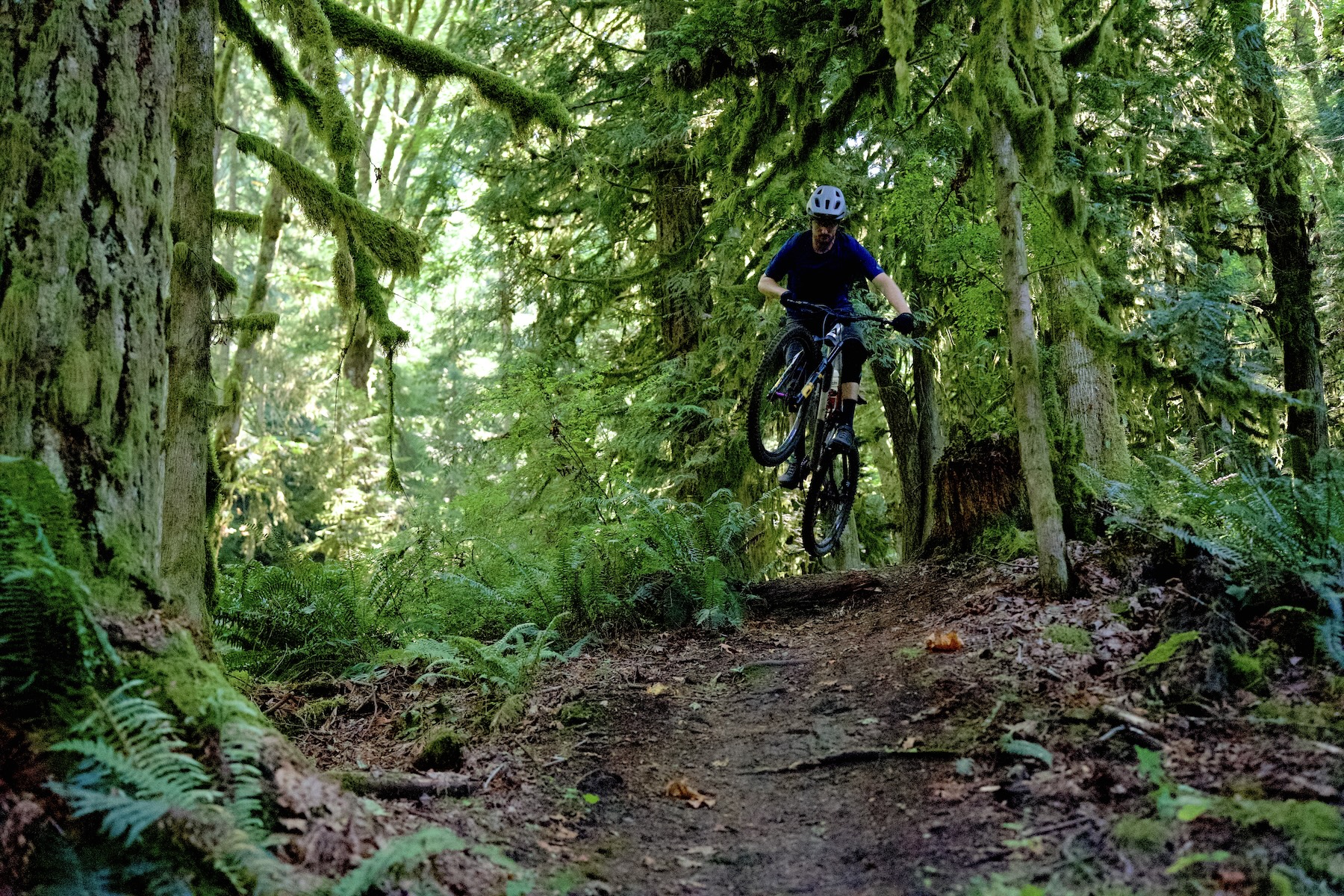
Design
From afar, the Mara Pro PB looks a whole lot like the outgoing Mara Pro that we reviewed (Note: “PB” stands for Piggy Back; Manitou now uses the Pro moniker for the more adjustable version of the Mara Inline, too). Some eagle-eyed onlookers may notice the shorter reservoir that aims to help the Mara Pro PB play nicely with a wider range of frame designs, but otherwise the same all-black design with fairly subtle branding remains. High-speed and low-speed compression, “Work / Party” climb switch, and external rebound adjusters are also carryovers from the prior model, and are notably easy to adjust even with gloves on. The “Work” and “Party” modes each get their own compression damping circuit, with “Work” mode being a non-adjustable climb setting. As the descending-focused setting, “Party” mode is influenced by the other external adjusters on the shock.
The rather high-volume King Can design remains too (a lower-volume air can is available separately if needed), but the big changes are hidden away inside. As David discussed in his review, the original Mara Pro design set negative air volume at ambient air pressure with the shock fully compressed, the result being a fixed negative spring pressure. This design meant that higher or lower positive pressures were not matched with higher or lower negative spring pressure, creating some issues in finding a setup that didn’t compromise on some combination of off-the-top sensitivity, mid-stroke support, or bottom-out resistance.
With the new air spring design used across all Mara shocks, Manitou has implemented what they call Balance Groove, which is essentially a dimple inside the air can that allows equalization of the positive and negative chambers — in other words, a self-adjusting negative spring is now present, as on most modern air-sprung shocks. The updated King Can design on our Mara Pro PB also moves away from the removable o-ring to adjust the air volume, instead using a fairly standard plastic spacer system. Though removing the King Can’s outer air sleeve still reveals an inner o-ring, that’s just the separator between the positive and negative portions of the air can. Clip-on plastic spacers (similar to the spacers used in the air sleeve of a Fox Float X2) can be used to adjust both positive and negative air volumes if desired, though Manitou says that the negative volume is factory-set at the suggested amount for the given stroke length.
Our Mara Pro PB showed up without any additional volume spacers in the box, though additional spacers can be purchased from Manitou directly.
Setup
I bolted the Mara Pro PB to my Kavenz VHP 16, which has been serving as a bit of a shock test mule this year. The very predictable rear suspension kinematics of the VHP 16 not only make shock setup fairly straightforward but also make it easier to pick out any quirks of a given shock’s performance.
While the King Can allows plenty of opportunity for tinkering with volume spacers, I found the stock setup to work just about perfectly for my setup preferences. It provided ample bottom-out resistance, but also allowed me to hit my sag target without the initial travel feeling overly soft or stiff.
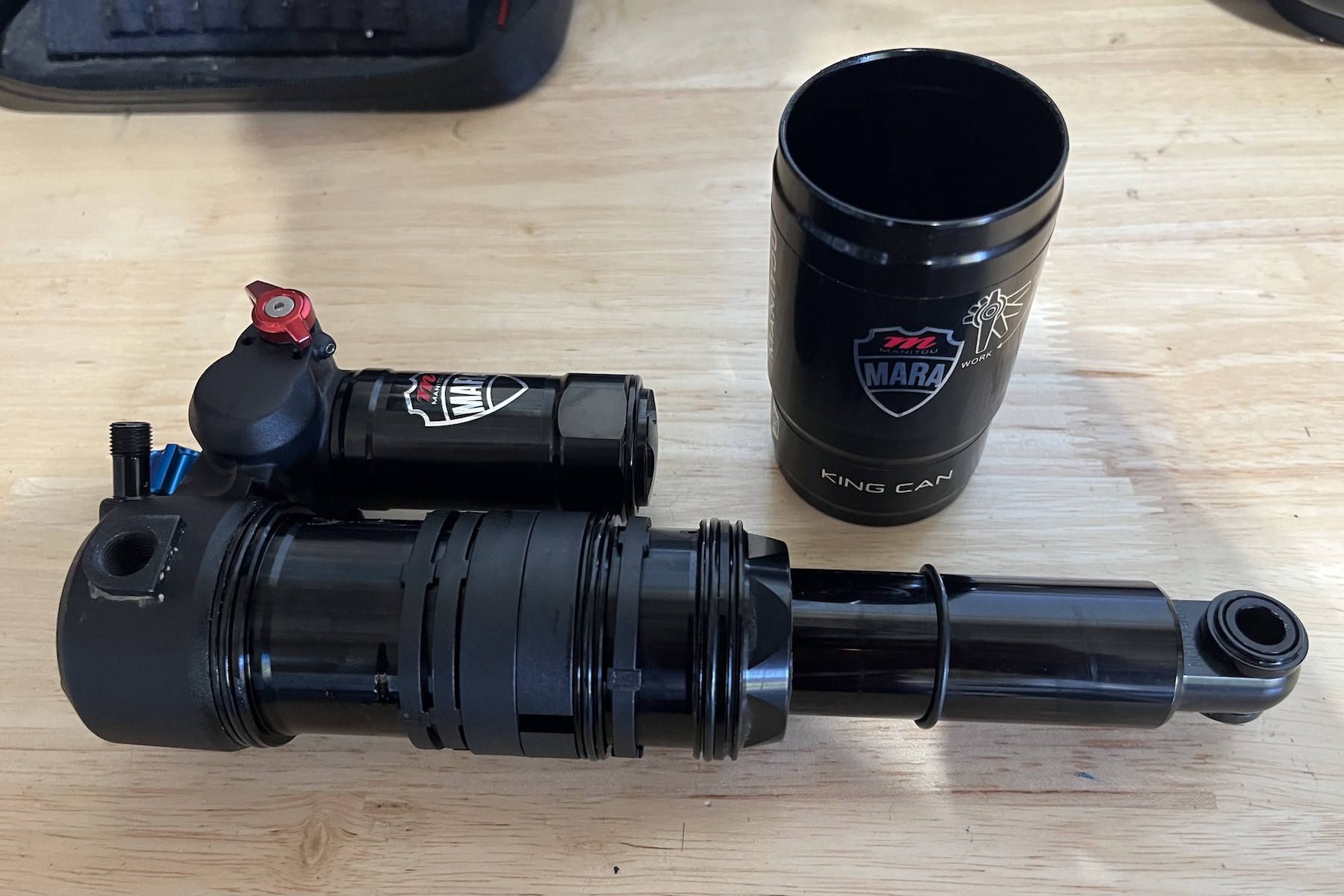
From a damper setting perspective, the Mara Pro PB offers quite a bit of adjustment with 36 clicks of low-speed compression, six of high-speed compression, and 12 clicks of rebound. I’ve previously talked about my preference for heavier-than-average compression damping paired with fast rebound, especially on blown-out summer trails, and the Mara Pro PB had plenty of adjustment range to hit my desired setup. The Mara Pro PB offers more adjustment range for rebound, low speed compression, and high speed compression than the RockShox Super Deluxe or Vivid Air, while being a bit less overwhelming to set up than the popular Fox X2. We’ve generally found that Manitou products tend to run higher damping levels than other brands, which is great for me on the compression side, but is also why I ended up running the rebound damping nearly fully open. I’d prefer to see less range in the low-speed compression adjustment in exchange for more range and finer adjustment intervals on the rebound side.
I struggled to tell the difference between a single click of low-speed compression and would prefer a smaller adjustment range with greater differences between clicks, but I generally found myself happy in the middle of the low-speed compression range, with high-speed compression one click from closed and rebound one from open. Also, the air spring’s stock spacer configuration offered enough end-stroke support right out of the box — though that is more luck for my body weight and bike setup than anything else.
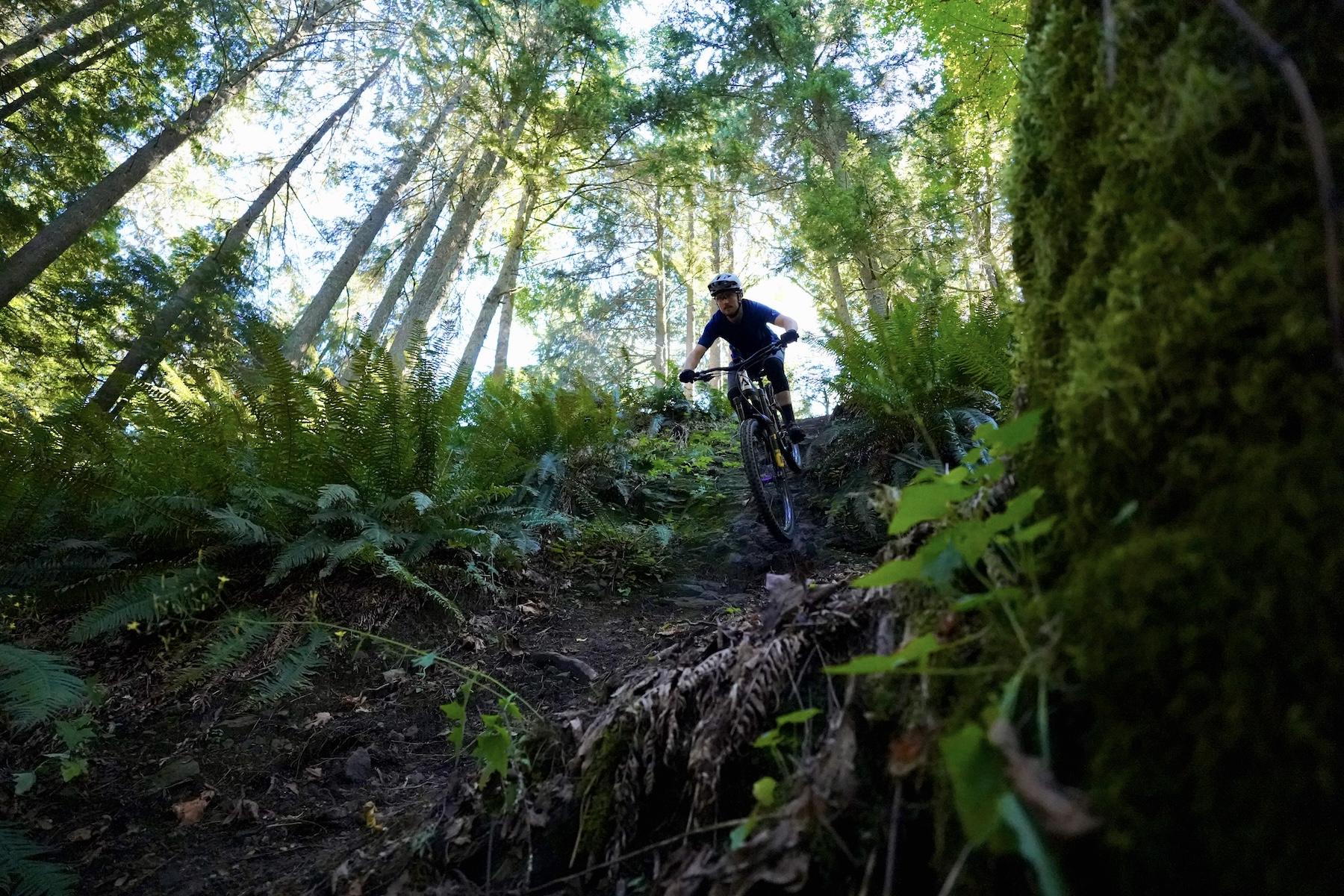
On the Trail
Even without a break-in period, the Mara Pro PB felt quite smooth and sensitive right out of the box, while also being very quiet in its operation. Some air shocks can have a noticeable “notch” in the travel at the point where the air piston reaches the equalization dimple and the positive and negative chamber equalize (the Balance Groove, in Manitou’s terms), but it wasn’t at all noticeable with the Mara Pro PB.
I am a big fan of what Manitou has done with their climb switch, with the paddle being easy to actuate from the top of the shock. While all of the various external adjustments only affect “Party” mode, the climb-oriented “Work” mode is highly reminiscent of the feel of my favorite climb settings from shocks like the EXT Storia and Cane Creek Tigon, offering a relatively firm platform and seemingly slightly slower rebound for a significant calming effect on the rear suspension, even while standing and pedaling. Despite feeling notably more efficient than “Party” mode, “Work” mode is also forgiving enough to not feel punishing on more ledgy and technical climbs. I don’t often feel the need to use a climb switch with how efficient a lot of bikes have become, but it can be a very nice feature on longer gravel climbs or particularly arduous singletrack efforts.
Effectively designing the positive and negative chambers on a shock can be a delicate balance — too small of a negative volume and the shock can feel a bit harsh over small bumps, or lacking in midstroke support. Too large, and the shock might feel vague and uncontrolled at the top of the travel. Manitou’s design seems to strike a Goldilocks middle ground, providing good small bump sensitivity while still giving good support early in the travel. Midstroke support is also ample, and the large volume air can helps to provide a fairly smooth end stroke ramp up too — even on my fairly progressive VHP 16 test bike, there was no discernible “progression wall” where the air spring feels like it gets aggressively firm near bottom out.
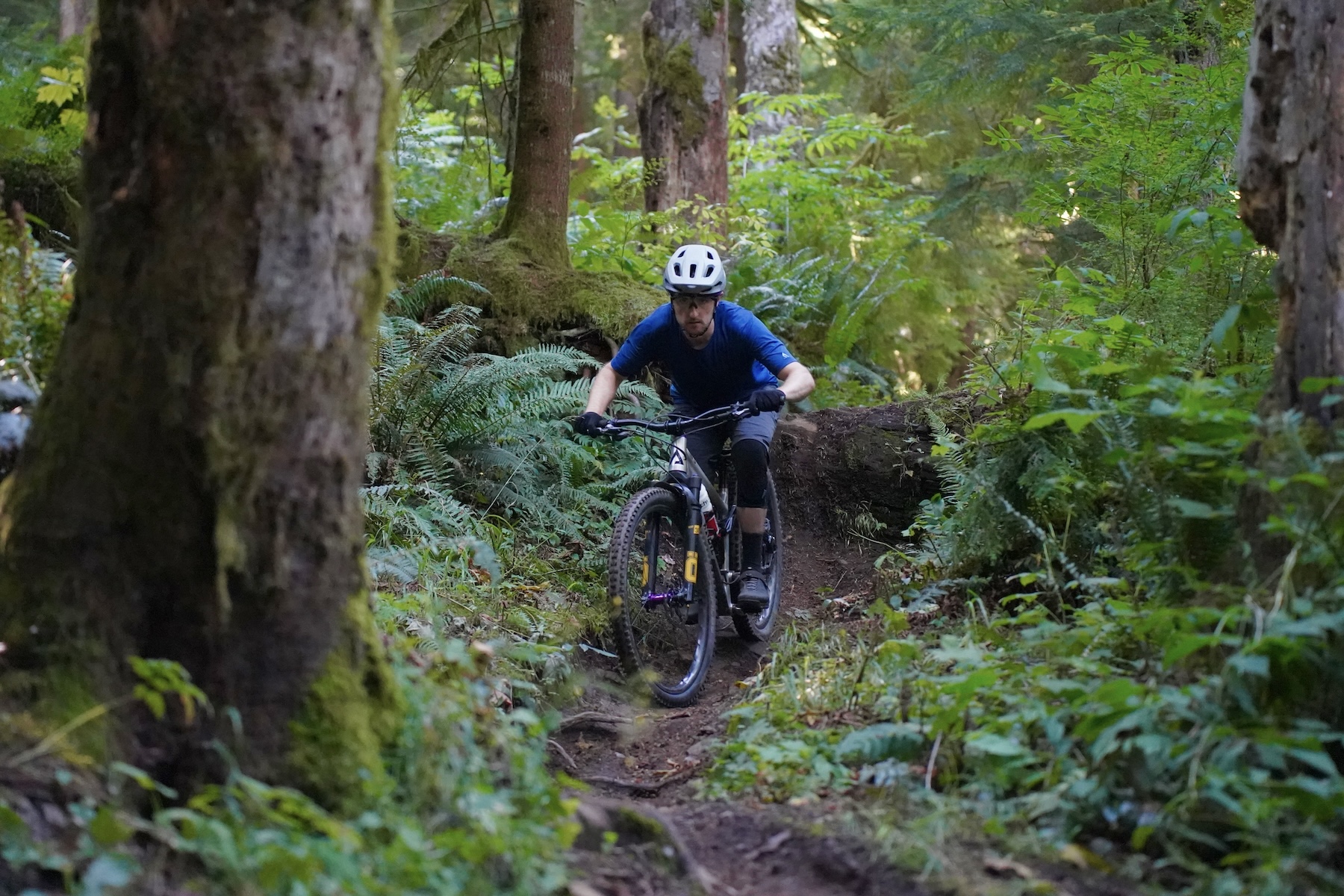
In practical terms, the well-executed air spring offered a notably predictable and fluid feeling on both smooth and rough trails, providing enough support to give plenty of pop and energy on jump trails while still effectively absorbing harsh repeated hits on long, steep descents. There is a trail here in Bellingham that covers nearly 3,000 feet of continuous (and very rough) descent, and I was able to do a “full pull” (no breaks) lap on the Mara Pro PB without the shock overheating or showing unexpected changes in damping performance. The large air volume and sizable reservoir undoubtedly help with diffusing heat, but the Mara Pro PB performed admirably and pretty much disappeared into the background in serious terrain.
I spent a good amount of time riding coil shocks in addition to air shocks like the Mara Pro PB, and while I wouldn’t quite describe the Mara Pro PB as “coil-like” in its feel, I appreciate the ability to fine-tune a well-executed air shock. While the ground-hugging performance of a good coil shock is addictive, the ability to dial in a more energetic feel with an air spring can lend a bit of extra pep to a burly Enduro bike while still holding its own in really rough terrain. The wide range of damper adjustments paired with the adjustable positive and negative air chambers offer dizzying configuration potential, and riders seeking a specific feel will very likely be able to find it with the Mara Pro PB.
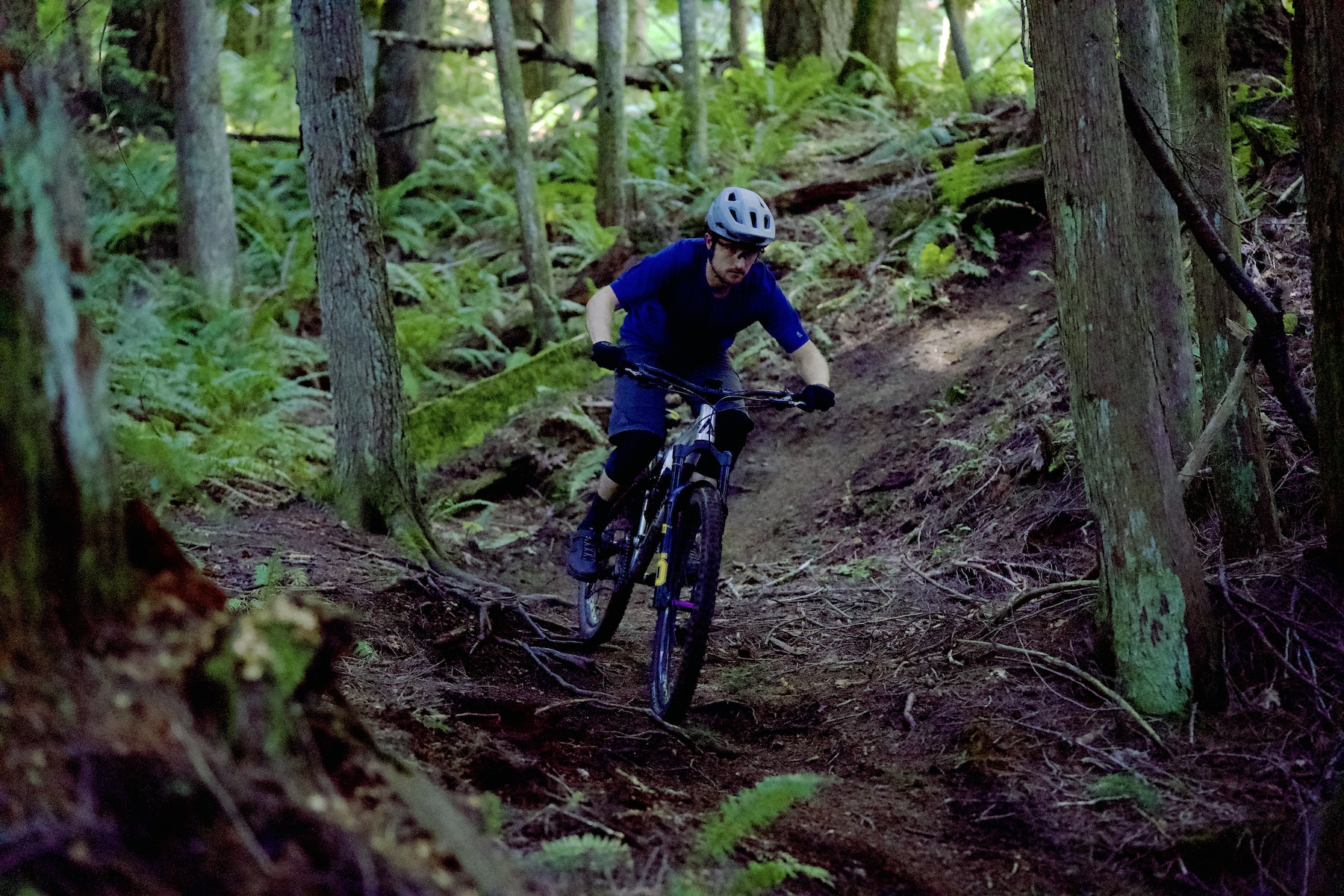
Durability
This was probably my highest-mileage summer on a bike, and the Mara Pro PB saw the most use of any shock in my arsenal. Despite a lot of abuse in varied conditions, the Mara Pro PB stayed consistent, held its air pressure, and generally didn’t require much thought — it was ready to ride every time I pulled it out.
When the time comes for service, Manitou is one of those companies that seems to prioritize at-home serviceability, and the Mara Pro PB follows that trend. Manitou suggests a 50-hour air can service, replacing the dynamic seals and o-rings — it’s a fairly simple service that doesn’t require specialty tools (though Manitou does make a few that might make some steps easier). The damper service interval is 250 hours, and Manitou publishes a full guide for that one, too — while it’s a fairly advanced procedure that I personally would pay someone to do for me, committed and experienced home suspension mechanics again have a step-by-step walkthrough available.
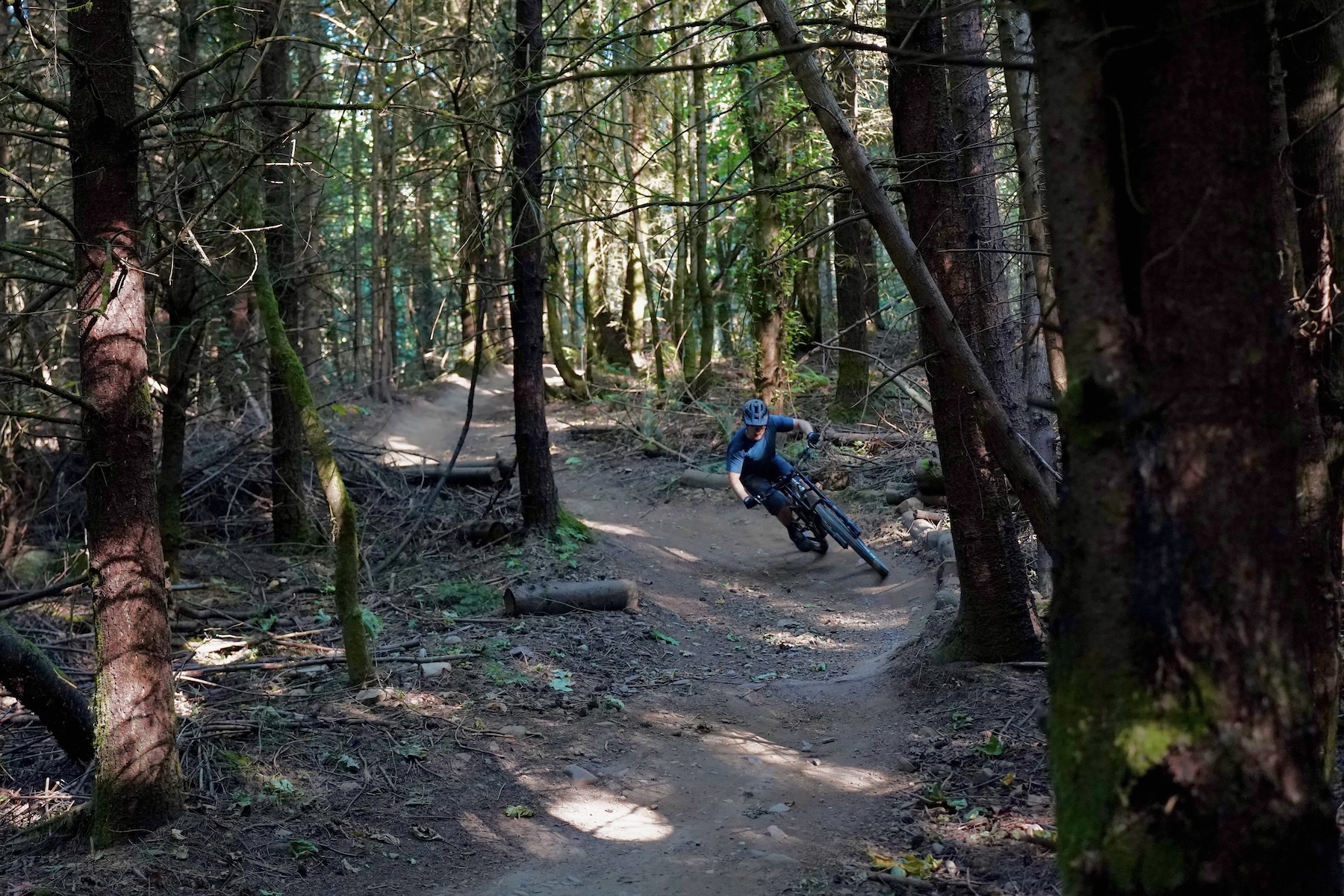
Who’s It For?
While there is no shortage of excellent air shocks on the market these days, Manitou has officially entered the chat with their updated Mara Pro PB. Its adjustability is expansive without being overwhelming for more set-and-forget riders, the new air spring works very well, and its performance has been consistently excellent on all types of trails. Its large size means that it does weigh somewhere between 80 and 100 grams more than a Fox Float X, but about 80 grams less than a Fox X2 — so, while it’s on the heavier side for Trail-oriented shocks, it’s right in range for burlier, more gravity-centric suspension.
Factor in the fairly reasonable $599 USD asking price, and I think there’s very broad appeal in the Mara Pro PB for descending-focused applications.
Bottom Line
We saw a lot of potential in the original Mara Pro, and it’s great to see Manitou capitalizing on a promising design with the air spring enhancements to the Mara Pro PB. Between the effective adjustments, highly tunable air spring, and fuss-free performance, the Mara Pro PB is one of those parts that simply works day in and day out. When it does come time for service, it manages to be fairly user-friendly, too. The Mara Pro PB combines all of the traits that we look for in an air shock for aggressive riding, and it’s one that I very much look forward to continuing to use going forward.

Where did you source the shorter PB? Had a MP sitting on the shelf all last season because it doesn’t clear my frame with the long PB. I think with the shorter one will make it work.
Manitou implemented a slightly shorter piggyback on the new model described in the review (Mara Pro PB, with the self-equalizing air spring). I believe there is a shorter reservoir option for the older model shock, as they used different reservoir lengths depending on shock size. Regardless, I’d recommend giving Manitou a call to ask them about options specific to your frame fitment and the specific size and version of the shock you have.